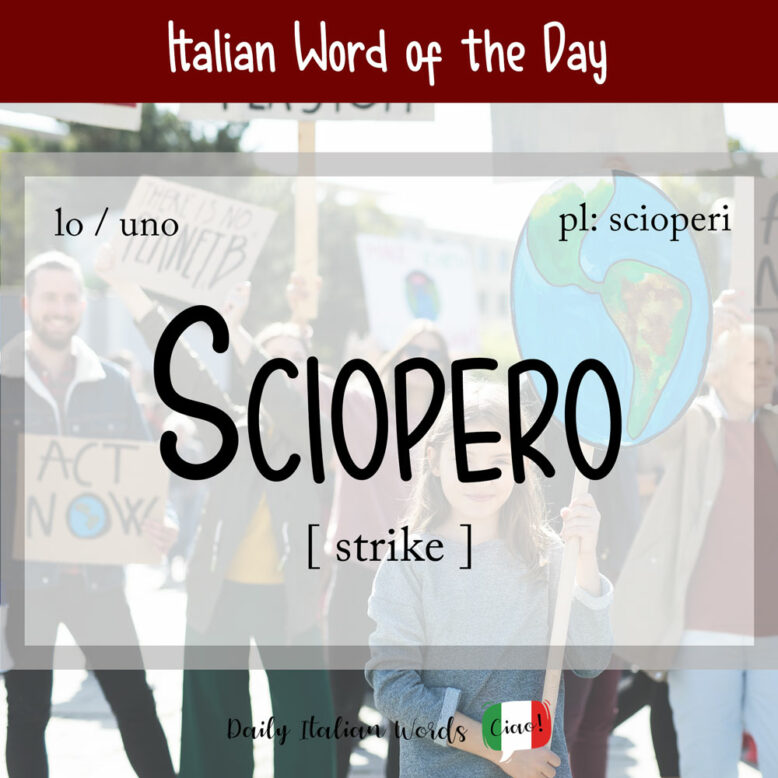When a group of employees refuses to work as a form of organised protest, this is called a sciopero (masculine, plural: scioperi) in Italian (or strike in English).

There are two main ways that you can say to go on strike in Italian: scioperare, the verb from which sciopero derives, and fare sciopero, which literally translates as to do a strike.
I pompieri fanno sciopero e scendono in piazza.
The firefighters are going on strike and taking to the streets.

Below are some other verbs that commonly appear with sciopero:
- essere in sciopero = to be on strike
- mettersi in sciopero = yet another way to say “to go on strike”
- partecipare a uno sciopero = to take part in a strike
- sospendere uno sciopero = to suspend a strike
- indire uno sciopero = to call a strike
Sciopero can also be used in a jocular or ironic sense to refer to someone who refrains from doing something they should be doing out of protest.
La mamma ha deciso di fare sciopero perché i bambini non aiutano in casa.
The mother decided to go on strike because the kids don’t help out around the house.
As for the many serious kinds of strikes that take place, you will certainly have heard of some of the following:
- sciopero generale = general strike
- sciopero parziale = partial strike
- sciopero della fame = hunger strike
- sciopero della solidarietà = sympathy strike
- sciopero selvaggio = wildcat strike
- sciopero bianco = work-to-rule, Italian strike
- sciopero mondiale = global strike
- sciopero per il clima = climate strike

Did you know that…?
The largest labour strike in history occurred in India on January 8th 2020. For 24 hours, one fourth of the country’s working population took to the streets, shutting down public services, retail, banking, transport, construction and industry.
Heather Broster is a graduate with honours in linguistics from the University of Western Ontario. She is an aspiring polyglot, proficient in English and Italian, as well as Japanese, Welsh, and French to varying degrees of fluency. Originally from Toronto, Heather has resided in various countries, notably Italy for a period of six years. Her primary focus lies in the fields of language acquisition, education, and bilingual instruction.


